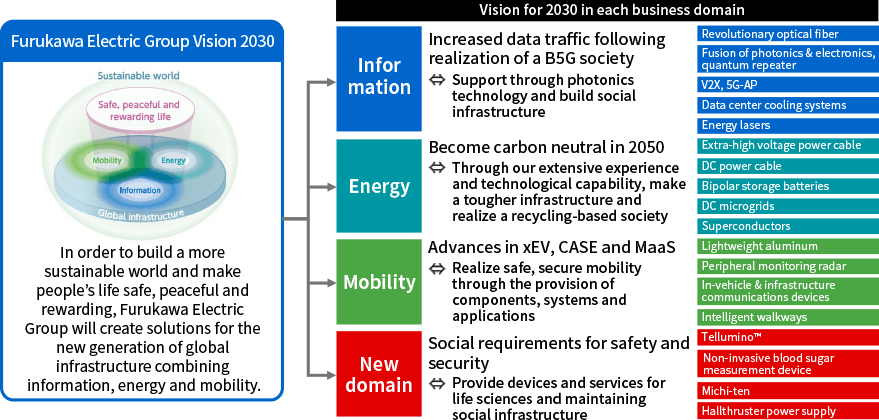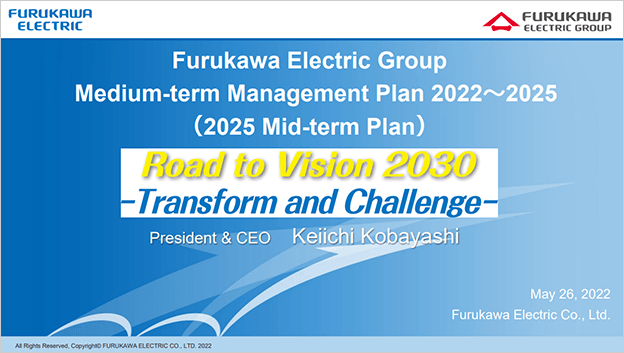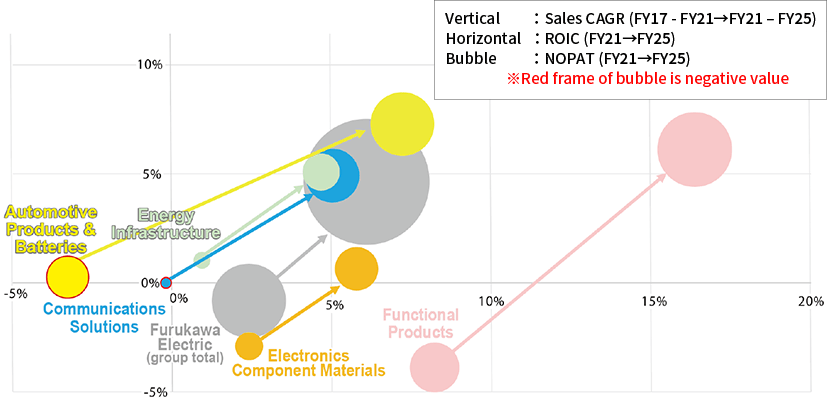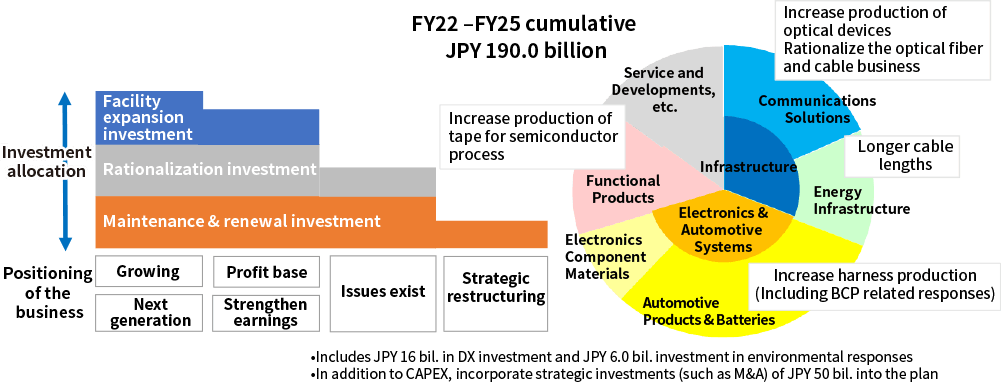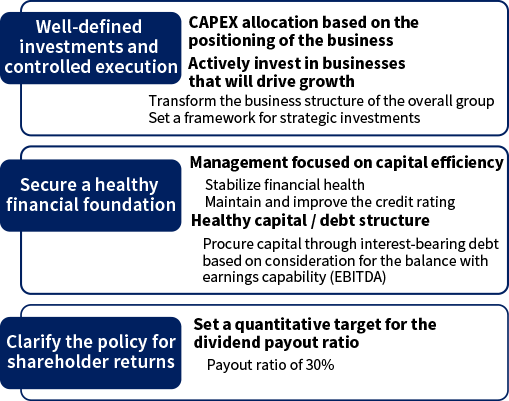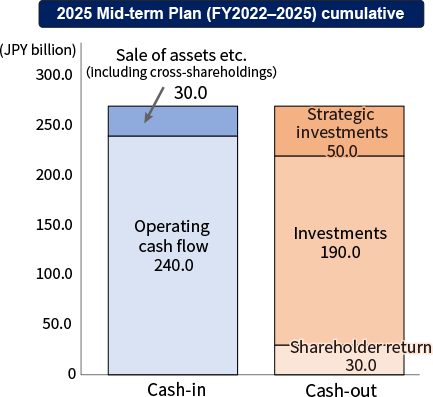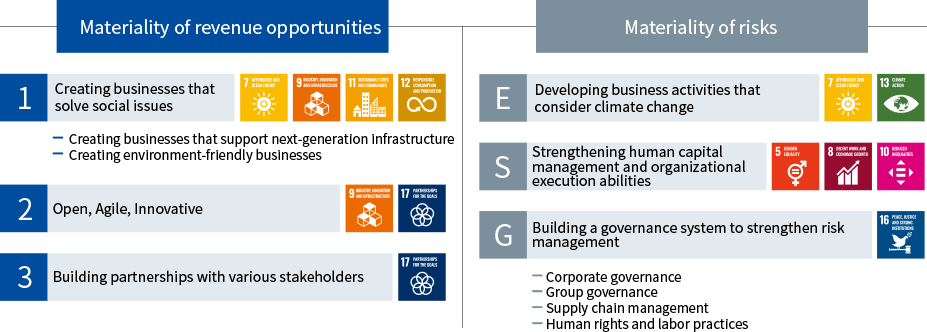Vision 2030 and positioning of 2025 Mid-term Plan
Value creation process directed at achieving Vision 2030
- Formulated 25 Mid-Term Plan as a milestone for achieving Vision 2030, which embodies what we will at 2030
- Identifying materiality as an important management issue from the perspective of profit opportunities and risks
- Promotion of ESG management with the aim of sustainable growth and medium-to long-term improvement of corporate value
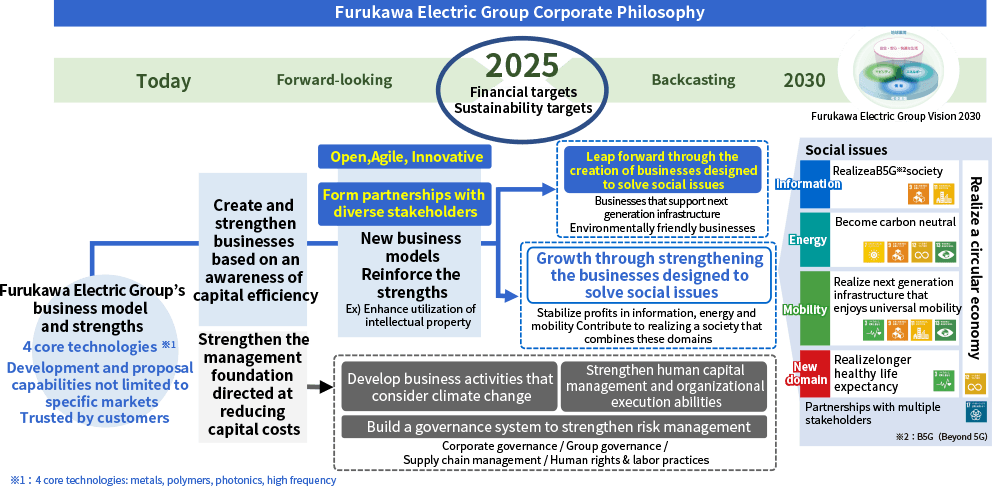
Positioning of 2025 Mid-term Plan
- Maximize profits in existing businesses through a focus on capital efficiency directed at 2025
- Build a foundation for creating new businesses by 2030
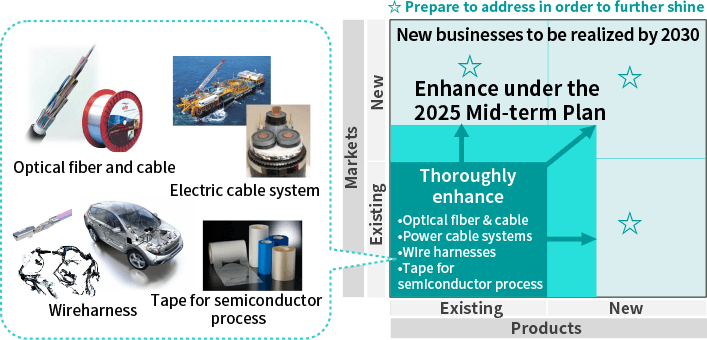
Vision 2030 (Each business domain)
- Create new value with customers as partners
- Solve social issues through that Furukawa Electric Group’s technology, products and services will "support" and "be utilized"
